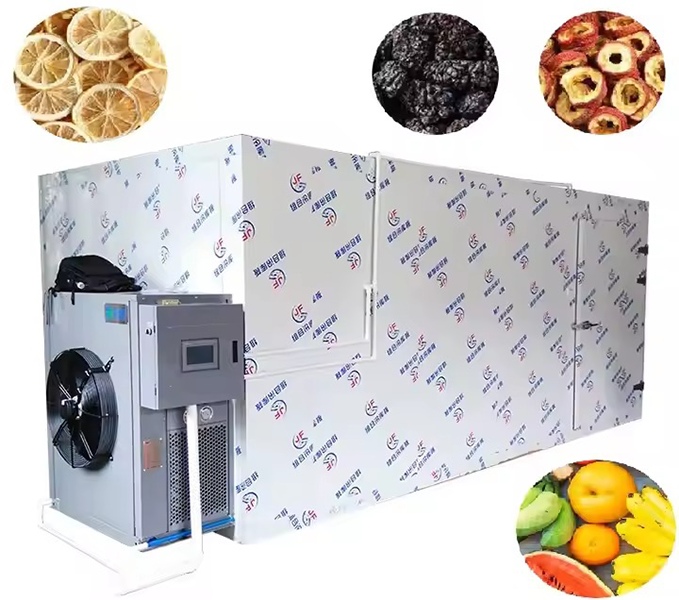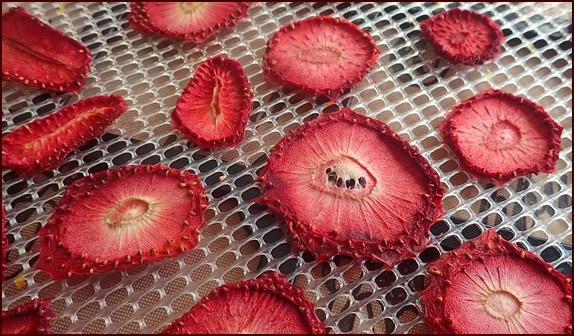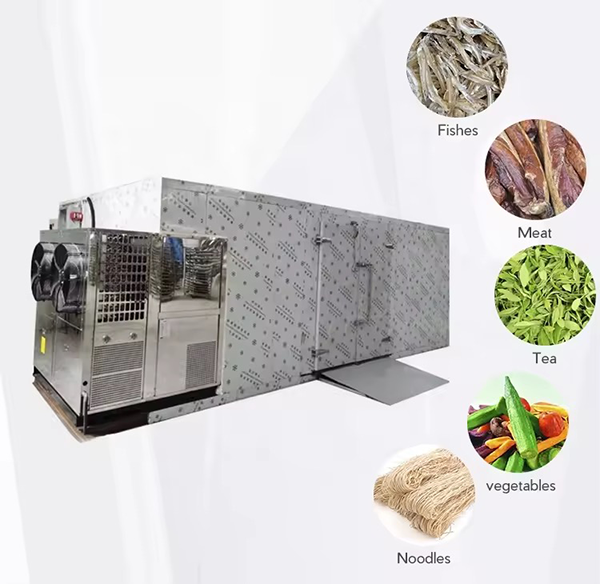
Content Menu
● Introduction
● Understanding Food Drying Technologies
>> What is a Condensation Dryer?
>> What is a Heat Pump Dryer?
● Key Differences Between Heat Pump Dryers and Condensation Dryers
● Advantages of Heat Pump Dryers
>> Energy Efficiency
>> Consistent Drying Conditions
>> Versatility
>> Reduced Environmental Impact
>> Improved Product Quality
>> Lower Humidity Levels
● Disadvantages of Heat Pump Dryers
>> Higher Initial Investment
>> Longer Drying Times
>> Complexity of Maintenance
● Advantages of Condensation Dryers
>> Lower Initial Cost
>> Faster Drying Times
>> Simplicity of Operation
● Disadvantages of Condensation Dryers
>> Higher Energy Consumption
>> Inconsistent Drying Conditions
>> Limited Control Over Humidity Levels
● Cost Analysis: Is It Worth It?
● Future Trends in Food Drying Technology
● Conclusion
● FAQ
>> 1. What types of foods can be dried using a heat pump dryer?
>> 2. How much energy does a heat pump dryer save compared to a condensation dryer?
>> 3. Are there any maintenance requirements for heat pump dryers?
>> 4. Can I use a condensation dryer for delicate foods?
>> 5. What factors should I consider when choosing between these two types of dryers?
Introduction
In the realm of food processing, drying is a crucial step that significantly impacts the quality and shelf life of products. As the demand for high-quality dried foods continues to rise globally, manufacturers are exploring various drying technologies to optimize their processes. Among the most popular options are heat pump dryers and condensation dryers. This article delves into the differences between these two types of dryers, highlighting their advantages, disadvantages, and whether investing in a heat pump dryer is worth the extra cost.

Understanding Food Drying Technologies
What is a Condensation Dryer?
A condensation dryer operates by removing moisture from food products through condensation. The process involves heating the air within the dryer, which then circulates around the food items. As the warm air absorbs moisture, it becomes humid and is directed to a cooling section where it condenses back into water. This water is collected and drained away.
Condensation dryers are often simpler in design and can be more straightforward to operate. They are commonly used in various industries due to their effectiveness in removing moisture quickly. However, their efficiency can vary based on the ambient temperature and humidity levels.
What is a Heat Pump Dryer?
A heat pump dryer, on the other hand, uses a more sophisticated method for drying food. It employs a refrigeration cycle to transfer heat from one area to another, allowing it to recycle heat efficiently. The dryer extracts moisture from the food while simultaneously condensing it and returning the heat to the drying chamber. This technology not only reduces energy consumption but also maintains a more consistent drying temperature.
Heat pump dryers can operate at lower temperatures than condensation dryers, making them ideal for sensitive products that require gentle handling during the drying process. This technology has gained popularity in recent years as manufacturers seek more sustainable and efficient solutions for food processing.
Key Differences Between Heat Pump Dryers and Condensation Dryers
| Feature | Heat Pump Dryer | Condensation Dryer |
| Energy Efficiency | Highly efficient due to heat recycling | Less efficient; energy loss occurs |
| Drying Temperature | Lower and more consistent | Higher temperatures can be damaging |
| Initial Investment Cost | Higher initial cost | Lower initial cost |
| Operating Costs | Lower operating costs over time | Higher operating costs |
| Environmental Impact | More environmentally friendly | Less eco-friendly |
Advantages of Heat Pump Dryers
Energy Efficiency
One of the primary advantages of heat pump dryers is their energy efficiency. They can use up to 50% less energy than traditional condensation dryers. This efficiency translates into lower operating costs over time, making them an attractive option for large-scale food manufacturers.
Consistent Drying Conditions
Heat pump dryers maintain a consistent temperature throughout the drying process, which is critical for preserving the quality of food products. This consistency helps prevent overheating or under-drying, ensuring that food retains its nutritional value and flavor.
Versatility
These dryers are versatile and can be used for various types of food products, including fruits, vegetables, meats, and herbs. Their ability to operate at lower temperatures makes them suitable for delicate items that require gentle drying.
Reduced Environmental Impact
By consuming less energy and utilizing renewable sources where possible, heat pump dryers contribute to lower carbon emissions compared to traditional drying methods. This aspect aligns with global sustainability goals and appeals to environmentally conscious consumers.
Improved Product Quality
The controlled environment within heat pump dryers helps maintain the color, texture, and taste of dried foods better than condensation dryers. Products dried with heat pump technology often exhibit superior quality attributes such as enhanced flavor profiles and vibrant colors.

Lower Humidity Levels
Heat pump dryers effectively manage humidity levels within the drying chamber. By controlling humidity, these dryers minimize the risk of mold growth during processing, which is particularly important for perishable items like fruits and vegetables.
Disadvantages of Heat Pump Dryers
Higher Initial Investment
The most significant drawback of heat pump dryers is their higher initial cost compared to condensation dryers. For small businesses or startups with limited budgets, this upfront investment can be a barrier.
Longer Drying Times
While heat pump dryers are efficient in energy use, they may require longer drying times compared to condensation dryers due to their lower operating temperatures. This factor may not be suitable for operations requiring quick turnaround times.
Complexity of Maintenance
Heat pump dryers often have more complex components than condensation dryers, which may require specialized knowledge for maintenance and repairs. This complexity can lead to increased downtime if issues arise.
Advantages of Condensation Dryers
Lower Initial Cost
Condensation dryers typically have a lower purchase price than heat pump dryers, making them accessible for smaller operations or those just starting in the food processing industry.
Faster Drying Times
Condensation dryers often provide faster drying times due to their ability to operate at higher temperatures. This speed can be beneficial for businesses needing quick processing cycles.
Simplicity of Operation
The straightforward design of condensation dryers makes them easier to operate and maintain compared to heat pump systems. Operators may find it less challenging to troubleshoot issues as they arise.
Disadvantages of Condensation Dryers
Higher Energy Consumption
Condensation dryers tend to consume more energy because they do not recycle heat as efficiently as heat pump dryers. Over time, this can lead to increased operational costs.
Inconsistent Drying Conditions
The higher temperatures used in condensation drying can lead to uneven drying results, potentially damaging sensitive foods or affecting their quality. For example, fruits dried at excessively high temperatures may lose their vibrant color or develop an undesirable texture.
Limited Control Over Humidity Levels
Condensation dryers may struggle with humidity control within the drying chamber, leading to potential issues such as mold growth or spoilage if not monitored closely during operation.
Cost Analysis: Is It Worth It?
When considering whether a heat pump dryer is worth the extra investment over a condensation dryer, several factors come into play:
- Initial Investment vs. Long-term Savings: While heat pump dryers have a higher upfront cost, their energy efficiency can lead to significant savings over time.
- Quality of Dried Products: For businesses focused on high-quality outputs, investing in a heat pump dryer may be justified due to its ability to maintain consistent drying conditions.
- Environmental Considerations: Companies aiming for sustainability may find that heat pump dryers align better with their environmental goals.
- Production Volume: For larger operations with high production volumes, the long-term savings on energy costs associated with heat pump technology can outweigh initial investment concerns.
- Market Trends: As consumer preferences shift towards healthier options and sustainable practices, investing in advanced technology like heat pumps may enhance brand reputation and marketability.
Future Trends in Food Drying Technology
As technology continues to advance, we can expect several trends that will shape the future of food drying:
- Integration with IoT: The Internet of Things (IoT) will likely play a significant role in enhancing dryer efficiency through real-time monitoring and automation systems that optimize performance based on environmental conditions.
- Smart Controls: Future models may feature smart controls that allow operators to set specific parameters based on product type or desired outcomes automatically.
- Sustainability Innovations: With increasing emphasis on sustainability in food processing, innovations aimed at reducing waste and improving energy efficiency will become paramount.
- Hybrid Systems: Combining different technologies (such as solar-assisted heating with heat pumps) could emerge as an effective way to further reduce energy consumption while maintaining product quality.
Conclusion
In summary, both heat pump dryers and condensation dryers have their unique advantages and disadvantages. The decision on which type of dryer to invest in ultimately depends on specific business needs, budget constraints, and long-term goals regarding product quality and sustainability. For those prioritizing energy efficiency and product integrity, investing in a heat pump dryer may prove worthwhile despite its higher initial cost.
When evaluating your options as a manufacturer or processor in the food industry, consider not only your immediate needs but also how your choice will affect your operations over time. As consumer demand grows for high-quality dried foods produced sustainably, aligning your equipment choices with these trends could position your business favorably in an increasingly competitive market.

FAQ
1. What types of foods can be dried using a heat pump dryer?
Heat pump dryers are versatile and can effectively dry various foods such as fruits, vegetables, meats, herbs, and even dairy products without compromising quality.
2. How much energy does a heat pump dryer save compared to a condensation dryer?
Heat pump dryers can save up to 50% more energy than condensation dryers due to their efficient heat recycling capabilities.
3. Are there any maintenance requirements for heat pump dryers?
Yes, regular maintenance is essential for optimal performance. This includes cleaning filters and ensuring that components are functioning correctly.
4. Can I use a condensation dryer for delicate foods?
While you can use a condensation dryer for delicate foods, it may not provide the same level of protection against overheating as a heat pump dryer would.
5. What factors should I consider when choosing between these two types of dryers?
Consider your budget, desired product quality, energy consumption preferences, environmental impact when choosing between a heat pump dryer and a condensation dryer.











